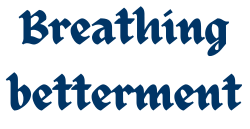Breathing: an automatic, unconscious process that sustains life. Yet, when was the last time you consciously thought about your breath? For most, it’s a rarity. But conscious breathing, or deep breathing, is a practice that can benefit your mental and physical health. If you’re new to the world of deep breathing, this beginner’s guide will help you understand its benefits and master the art.
Deep breathing is a technique that involves slow, intentional inhalation and exhalation. It may sound simple, but its impacts can be profound. This practice can help reduce stress and anxiety, lower blood pressure, improve sleep, and even boost your immune system. By consciously controlling your breath, you can influence your body’s response to stress and promote a sense of calm and relaxation.
To start your deep breathing journey, find a quiet and comfortable space where you can focus without distraction. Begin by sitting up straight, relaxing your shoulders, and placing one hand on your belly and the other on your chest. This positioning helps you focus on expanding your belly rather than your chest when inhaling, which is essential for proper deep breathing.
As you breathe, aim for a slow and steady pace. Count to three as you inhale, pause briefly, and then exhale for another count of three. Repeat this cycle, focusing on the sensation of the breath moving in and out of your body. If you find your mind wandering, gently bring your attention back to your breath.
It’s important to note that deep breathing is not just about slow inhalation and exhalation. It’s about maximizing the intake of oxygen and fully expanding your lungs. This is why proper technique matters. As you inhale, ensure your belly rises before your chest, and as you exhale, contract your abdominal muscles to push out as much air as possible.
Make deep breathing a daily habit by setting aside a few minutes each day to practice. You can do this first thing in the morning to center yourself or before bed to unwind and prepare for sleep. With time and practice, you may find that you can breathe more slowly and deeply, and the benefits will start to unfold.
If you’re ever unsure or want guidance, there are many apps available that can help you master the art of deep breathing. These apps often provide structured breathing routines and reminders to ensure you stay consistent. They can be a great tool to help you develop this healthy habit.
Remember, deep breathing is a natural and powerful tool that anyone can use to improve their overall well-being. It may take some time to feel comfortable with the technique and develop a routine, but the benefits are accessible to everyone. So, take a moment, focus on your breath, and embrace the calming power of deep breathing. Your mind and body will thank you.
As you continue your deep breathing journey, you may also want to explore different types of breathing techniques, such as equal breathing, alternate nostril breathing, or breath retention. Each technique offers unique benefits, and exploring them can help you find what works best for your mind and body.
Guided meditations that incorporate deep breathing exercises are also readily available online and through apps. These guided practices can be incredibly helpful when you’re first starting or when you want to explore more advanced techniques. Remember, there is no one-size-fits-all approach to deep breathing, so feel free to experiment and find the styles and rhythms that work best for you.
Lastly, deep breathing is a tool that can be used in any situation, whether you’re facing a challenging day or simply wanting to unwind after a long one. So embrace this ancient practice, make it your own, and let your breath be your anchor in the chaos of everyday life.
If you have any questions Contact Us Here.

